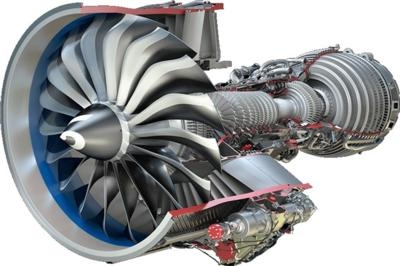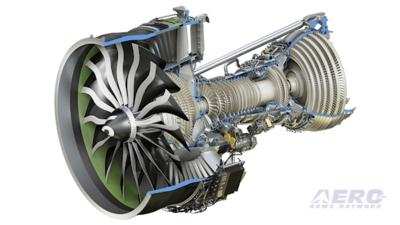New Engines For Several New Commercial Aircraft
Show with several new engines entering service or under development while engine production continues at record levels.

The numbers are eye opening. GE Aviation and its engine partner companies now have more than 65,000 commercial and military engines flying today. Between 2016 and 2020, they will deliver another 10,000 engines. GE Aviation's industrial backlog of engines and long-term engine service contracts exceeds $150 billion.
"Over this decade, we have been experiencing a transformation of our commercial engine portfolio," said David Joyce, vice chairman of GE and president and CEO of GE Aviation. "At the same time, we have significant new military engine developments that led us to transition more than 700 engineers into our military division."
A big focus at the Paris Air Show will be the new LEAP engine produced by CFM International, the 50/50 joint company of GE and Safran Aircraft Engines of France. The LEAP powers the largest and most utilized fleet of Airbus A320neo aircraft, which entered airline service last August; and the Boeing 737 MAX, with the first aircraft delivered last month. They are the airline industry's fastest-selling aircraft. The backlog for LEAP engines now exceeds 12,500 engines.
Approximately 35,000 jet engines in airline service are monitored and diagnosed around-the-clock by the GE-developed Predix cloud-based platform, which is reducing engine maintenance. Meanwhile, scheduled engine shop visits into GE's services operation will grow from 4,500 in 2016 to 5,600 in 2020. GE's use of digital analytics to collaborate with airlines on real-time engine performance will be a big GE focus at the Paris show.

New GE engines under development, such as the GE9X for the Boeing 777X and advanced military engines for the U.S. military, incorporate unique technologies from GE Aviation investments in new technologies ($8.6 billion in R&D since 2010) and new plants and equipment ($5.5 billion since 2011).
The shift is dramatic. For example, the LEAP engine is the first commercial engine ever to incorporate a sophisticated hot-section component made of ceramic matrix composites (CMCs), and the population of CMC parts will multiply in the GE9X engine that enters service on the Boeing 777X at the decade's end. CMCs are a key technology advantage for GE's advanced military engines under development, which are setting propulsion records for compressor efficiency and operating temperatures.
To achieve this, GE Aviation created America's first integrated supply chain for CMCs from R&D facilities to raw material factories to final production. By 2020, GE's new factories in Huntsville, Alabama, will annually produce 20 metric tons of CMC raw material while GE's CMC component production factory in Asheville, N.C., will deliver more than 25,000 CMC LEAP components.
GE Aviation is the first in jet propulsion to introduce complex components produced with additive manufacturing. This year, more than 50 additive machines at GE Aviation's new plant in Auburn, Alabama, will produce 22,000 fuel nozzle injectors for the LEAP engine, and the annual volume soon grows beyond 25,000 annually.
GE's ground-breaking experience with additive manufacturing led to the 2016 creation of GE Additive, which acquired control of ARCAM AB of Sweden and Concept Laser of Germany, two leading suppliers of additive machines, materials, and technology.
(Source: GE Aviation news release. Images from file)
 Unfortunate... ANN/SportPlane Resource Guide Adds To Cautionary Advisories
Unfortunate... ANN/SportPlane Resource Guide Adds To Cautionary Advisories ANN FAQ: Turn On Post Notifications
ANN FAQ: Turn On Post Notifications ANN's Daily Aero-Term (04.29.24): Visual Approach Slope Indicator (VASI)
ANN's Daily Aero-Term (04.29.24): Visual Approach Slope Indicator (VASI) ANN's Daily Aero-Term (04.28.24): Airport Marking Aids
ANN's Daily Aero-Term (04.28.24): Airport Marking Aids ANN's Daily Aero-Linx (04.28.24)
ANN's Daily Aero-Linx (04.28.24)




